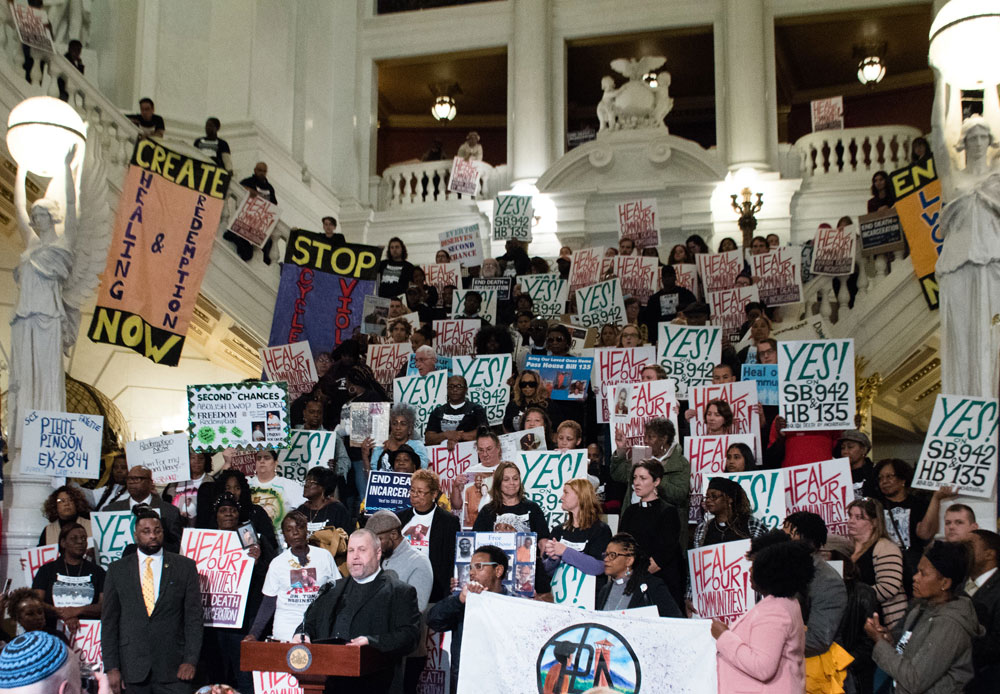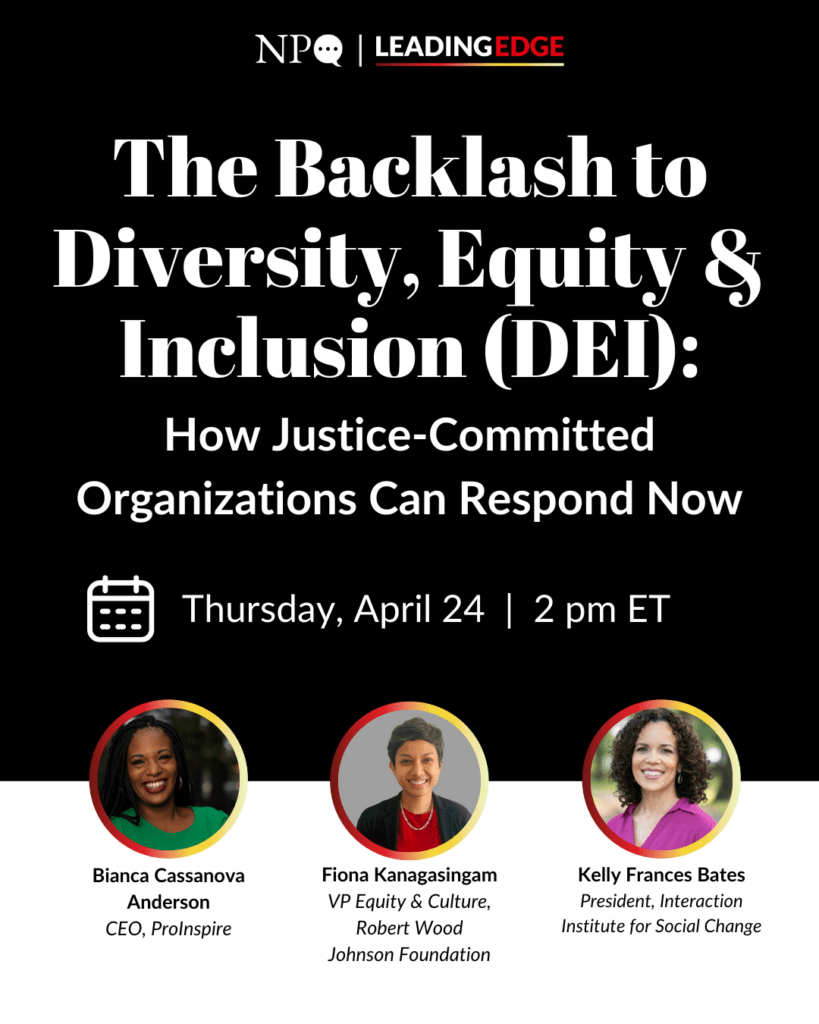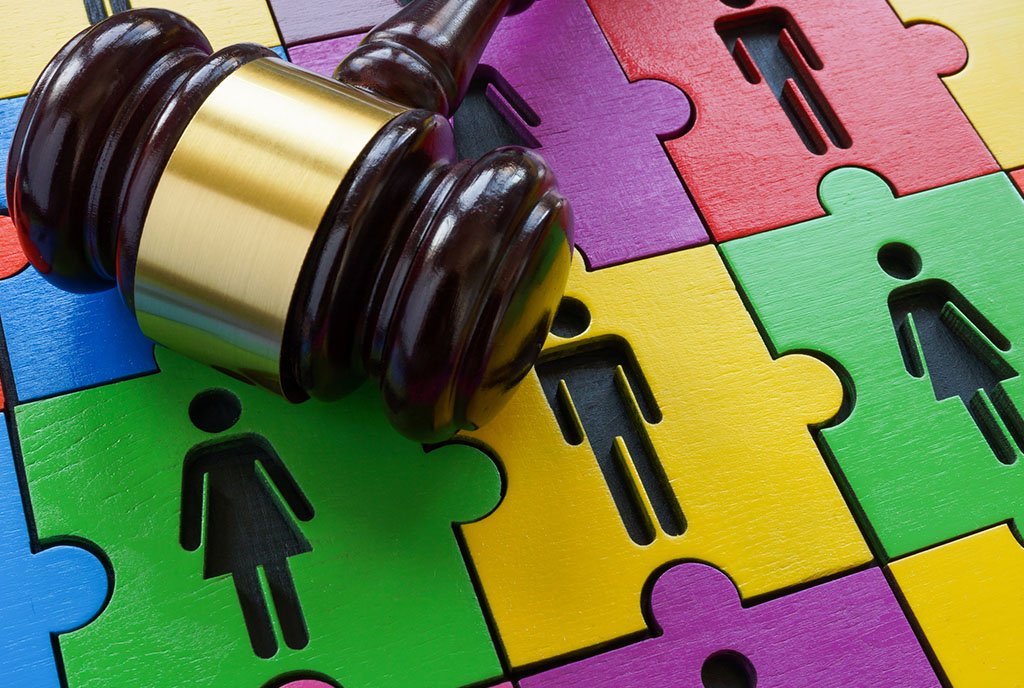
James King had been home from prison only four months when he heard California Governor Gavin Newsom say at a press conference, “I have no interest—and I want to make this crystal clear—in releasing violent criminals from our system.”
It was March 23, 2020, and just one inmate and five employees in the California prison system had tested positive for COVID-19. Now, over six weeks later, jails and prisons across the country are collectively seeing COVID-19 cases in the thousands. Cook County Jail in Chicago, for instance, is the largest single known source of infections in the country. And, according to The Marshall Project, which is tracking the virus in prisons state by state, there are now more than 9,400 prisoners infected and there have been at least 140 deaths. Moreover, “the number of new cases among prisoners is more than doubling each week even as some parts of the country are starting to flatten the curve through social distancing.”
Releasing People to Slow the Pandemic
But what James King heard in Governor Newsom’s pointed assurance on March 23rd, as he described in a recent podcast from the Ella Baker Center for Human Rights in Oakland, CA, are the echoes of age-old rhetoric about the grave risks of “releasing violent criminals.” Now the state campaign manager at Ella Baker Center, King was concerned that Newsom was not acknowledging the vast numbers of prisoners sentenced for violent crimes many years ago who are no longer violent. He was immediately moved to write an op-ed, published in The Appeal on March 30th. In it, he shares that he had been serving a life sentence under California’s draconian Three Strikes Law before Newsom’s predecessor, Jerry Brown commuted his sentence. He writes of specific people with whom he had just recently been in prison:
To be clear, I’m advocating for the release of people like Freddie Cole. He just turned 79, and three years ago he had a pacemaker installed. Or Amir Shabazz, 70 years old now, who contracted valley fever 10 years ago and almost died. Though he survived, doctors have assured him that his immune system will be compromised for the remainder of his life. I don’t think anyone would look at them and just see “violent criminals,” since neither has committed an act of violence in decades, and both are mentors to many of the young people in their respective religious communities…[I]t’s important we avoid using “violent criminal” rhetoric to justify abandoning thousands of elderly people, which endangers us all.
And King’s call to action to “free our elders and those with compromised immune systems” is consistent with the COVID-inspired recommendations of the Prison Policy Initiative, a nonprofit research and advocacy organization focused on the harm of mass criminalization. To slow the pandemic, they recommend releasing people from both jails and prisons, including:
- 75,000 people in jail who are within three months of their release date
- 600,000 people in prisons with a year or less left on their sentences
- 20,000 people in jail who are over age 60
- 132,000 people in state prisons who are 55 years or older
- Anyone whose offense is considered minor or who has a low likelihood of committing another serious offense.
Clearly, these experts are not worried about spikes in crime. There are any number of questions raised about how to support people financially and socially if they are released, of course, but the concern is not over “violent criminals” unleashed to do harm in communities, as the persistent political rhetoric would suggest.
Never-ending Reform
What makes these calls for people to be released from jails and prisons to slow the pandemic important, in part, is that they are not calls for “criminal justice reform,” per se, but rather for bold—and, many would argue, long overdue—action from the powers that be: district attorneys, sheriffs, judges, governors, and so on. Victoria Law, who writes frequently about incarceration and its alternatives, said on a recent News Beat podcast that the history of prisons in the United States is “a history of reform after reform after reform.” From the very beginning— Philadelphia’s Walnut Street Penitentiary in the late 1700s and New York’s Auburn Prison that opened in 1818—people have been calling for reform. And yet, 200-plus years later, here we are: an astounding 70 million Americans have a criminal record and 12 million cycle through the criminal justice system every year.
The most recent federal US prison reform bill was spearheaded by none other than Jared Kushner, President Donald Trump’s son-in-law. Aptly called the FIRST STEP Act, advocates had to fight hard to ensure the final legislation had any real teeth at all. Ames Grawert and Tim Lau write on the Brennan Center for Justice’s website about the process:
Momentum started to pick up in early 2018, when the White House brokered the Prison Reform and Redemption Act, a bipartisan bill aimed at improving conditions in federal prisons. This bill, which was renamed the FIRST STEP Act after some modest improvements were added, still lacked any meaningful sentencing reform component, meaning it would have done little to reduce the prison population. For the White House, that was part of the appeal: Republican leaders believed that SRCA’s sentencing reform provisions made it a nonstarter among conservatives. But because of that, the Brennan Center and a coalition of more than 100 civil rights groups opposed the bill, arguing that the votes were there for sentencing reform—if only Republican leaders would put a bill on the floor.
Conditions inside prisons have been the subject of reform calls in the US since the 1700s, but they do nothing to prevent or limit the amount of time people actually spend in prison. The Brennan Center and other advocates held out for the inclusion of sentencing reform in the FIRST STEP Act because, in their words, “reduc[ing] the number of people in prison is part of the starting point of any serious legislation for criminal justice reform.” NBC News reported that as of late 2019, just 3,000 inmates have been released and another roughly 1,700 people convicted of crack cocaine offenses have seen their sentences reduced due to the legislation. A “first step” indeed.
What Lies Beyond Reform?
This never-ending history of reform begs the obvious question: What if the frame of “reform” has been holding us back all along. Again, in today’s COVID-19 pandemic, advocates are calling not for reform, but for release. NPQ’s Cyndi Suarez wrote recently about what the pandemic is teaching us regarding the pace and nature of social change: “The fact that we have the ability to release all people from jails may signal that they probably shouldn’t be jailed in the first place.” Can we challenge ourselves to question our core assumptions about violence and punishment in our society? Can we finally hear what prison abolitionists like Angela Davis and Ruthie Gilmore have been saying to us for decades but too many of us across civil society have disregarded as too radical or politically unfeasible?
In an extensive profile by Rachel Kushner in the New York Times Magazine last year, Gilmore, a scholar and the co-founder of Critical Resistance among other organizations, explained how reforms like the FIRST STEP Act leave intact, and even reinforce, the existing system. “So many of these proposed remedies don’t end up diminishing the system. They regard the system as something that can be fixed by removing and replacing a few elements,” she told Kushner.
But where Gilmore is particularly provocative, and clarifying, is in challenging the frames so often used in the discussion of criminal justice reform. Kushner writes:
Gilmore has come to understand that there are certain narratives people cling to that are not only false but that allow for policy positions aimed at minor or misdirected—rather than fundamental and meaningful—reforms. Gilmore takes apart these narratives: that a significant number of people are in prison for nonviolent drug convictions; that prison is a modified continuation of slavery, and, by extension, that most everyone in prison is black; and, as she explained in Chicago, that corporate profit motive is the primary engine of incarceration.
In fact, less than one in five nationally are in prison for drug offenses, for instance. And Black people, Gilmore argues, are absolutely disproportionately affected by mass incarceration at 33 percent of those in prison and only 12 percent of the US population, but focusing on race to the exclusion of focusing on why violence happens and what a humane society should do about it avoids the central and uncomfortable challenge of the abolition frame.
Sign up for our free newsletters
Subscribe to NPQ's newsletters to have our top stories delivered directly to your inbox.
By signing up, you agree to our privacy policy and terms of use, and to receive messages from NPQ and our partners.
Organizer and educator Mariame Kaba’s work is focused on dismantling the prison-industrial complex; she is the founder and director of Project NIA in New York City. In an interview with John Duda of Democracy Collaborative, she describes our current failure of imagination this way:
The prison and the police are in our heads and hearts; therefore, this system is naturalized in a way that makes it almost impossible for folks to step back and think that it wasn’t always like this. How did people manage before? How might we look into the future and imagine something different? Nothing is really permanent, right? Things are going to transform and change. We see that just in our own life span.
We know that what is in our hearts and minds is paramount, as is our imagination, in acting as agents of social change. But practically speaking, what can replace the seemingly insatiable narrative of violent criminals being “brought to justice” by policing and prisons?
An increasing number of people are experiencing what’s called “restorative justice” in their schools and communities, offering a tangible and visceral alternative to deeply ingrained notions of punishment. Kaba describes it this way:
It means that people that were harmed are centered in terms of their harm being seen and valued and addressed. It means that bystanders are called to be part of encircling that person and it means that the person who has harmed is also called in to take accountability for what they’ve done. It’s a very different model than the adversarial system that we currently have where harms occur and the state intervenes.
Restorative justice practices are increasingly used in schools to prevent suspensions, expulsions, and engagement with the criminal justice system when young people cause harm. The Oakland Unified School District for instance, has a staff position dedicated to promoting these practices across its school system. Restorative justice has also been introduced to help address domestic violence survivors and perpetrators. At the nonprofit group Impact Justice, sujatha baliga directs the Restorative Justice Project. “Restorative justice believes families and communities have the capacity to heal transgenerational harms and their many roots,” she says on the project’s website. “Restorative processes move us beyond a justice of sides (survivor versus the person who caused the harm) to a more holistic, empowering, and safety-driven approach.”
And restorative justice in not only being used to divert people from jails and prisons, it is being used with people living inside them. The Insight Prison Project based in the San Quentin State Prison in California has been working this way since 1997. Their cornerstone program, Victim Offender Education Group (VOEG) is an 18-month intensive for incarcerated people that culminates with participants meeting with victims for a healing dialogue. Insight Prison Project articulates the ethos of restorative justice like this:
Our current retributive justice system focuses on punishment, regarding the state as the primary victim of criminal acts and casting victims and prisoners in passive roles. Restorative Justice, by contrast, focuses on healing and rehabilitation. It incorporates a strong human rights analysis that emphasizes the factors of race and class in the over-incarceration of people. Restorative Justice sees crime as a breakdown of society and human relationships and attempts to mend these relationships through dialogue, community support, involvement, and inclusion.
Crime as a breakdown of human relationships is a transformational reframe that can completely reorient (not reform) our approach to justice.
Seizing the Moment
As COVID-19 infections and the threat thereof spread through jails and prisons across the country, we are seeing pockets of action that legitimately speak to the possibility for long-term change. In Maryland, the Baltimore Sun recently reported, Court of Appeals Chief Judge Ellen Barbera ordered judges handling juvenile cases to determine whether jailing the juvenile would cause “serious health risks to the juvenile, other detained individuals, staff, or the community” before locking them up. Cities including New Orleans, Seattle, and Baltimore, according to the Brennan Center for Justice, have introduced mandates of non-prosecution for low-level offenses. In San Francisco, the newly elected district attorney Chesa Boudin described to Terry Gross on NPR’s Fresh Air how they have reduced the jail population in the City by 40 percent in just the three months since his election:
We analyzed the entire jail population in numerous different segments or slices. We looked at inmates who were elderly. We looked at inmates who were incarcerated for misdemeanors. We looked at inmates who had been conserved and were simply in jail waiting for placement in an appropriate mental health facility. We looked at veterans. We looked at people who were being held simply because of their inability to pay a low bail amount. We looked at people who had already been sentenced and had an upcoming release date in the next couple of months. We looked at people who were incarcerated just because of a technical violation of probation or parole and so on. One of the things that’s interesting that we found in this process, Terry, is that it is, in fact, possible to safely and quickly decarcerate.
Boudin’s analysis approach is, of course, possible in every jail and prison across this country. One critical opportunity with COVID-19 is to track the recidivism data in places like San Francisco that have taken bold action and then use that data in systems change advocacy. Lauren-Brooke Eisen, director of the Brennan Center’s Justice Program, spoke to the possibility: “This is gonna be a really important moment for criminal justice reform where a lot of police, prosecutors, corrections agencies say, ‘Let’s not go back,’—this is our hope, right? Let’s not go back to where we were,” she said in The Intercept.
Indeed, let’s not go back. But let’s also be “crystal clear,” to borrow Governor Newsom’s words, that we are moving towards something fundamentally different. We are, finally, looking to the framing of Ruthie Gilmore and Mariame Kaba and their fellow prison abolitionists who help us to imagine a society where violence is healed rather than met with more violence. A society where we do not dispose of people, but rather call them into accountability and relationship. As organizer Amanda Lawson, founder of the bail justice organization Dollar Bail Brigade in New York City wrote recently on Twitter: “One way that studying abolition has made my life much more livable is by understanding the scope of harm: how everyone harms, including me, and how systems of oppression live in us. It’s taught me to cherish people who value accountability because harm is an eventuality.”
Jeanne Bell directs the Advancing Practice program at NPQ. She has written previously for NPQ about the criminal justice system and whiteness.











